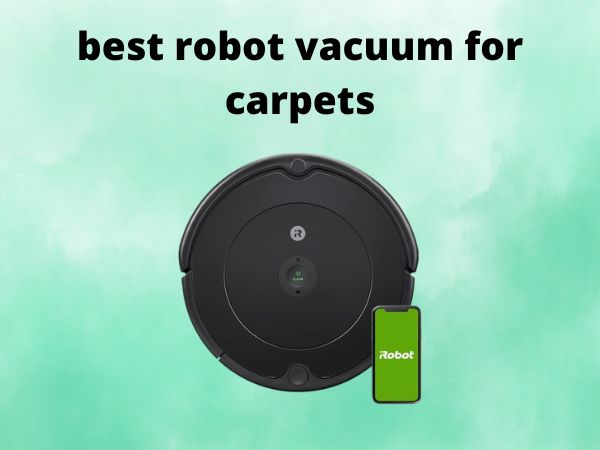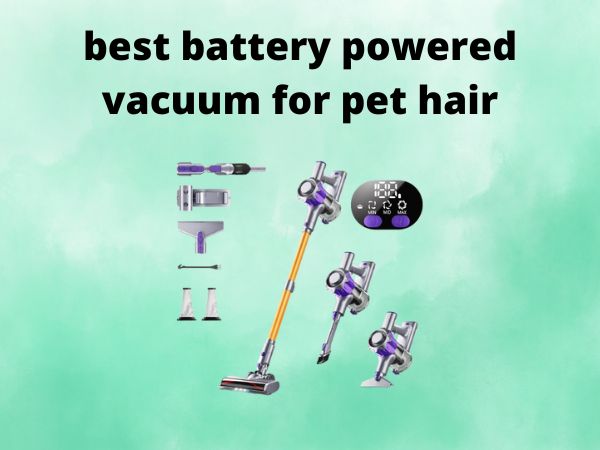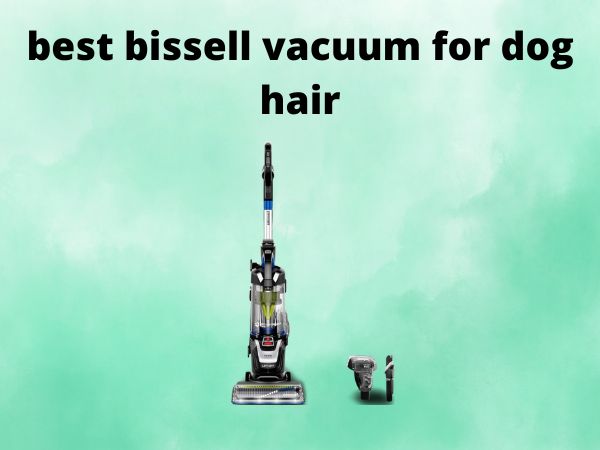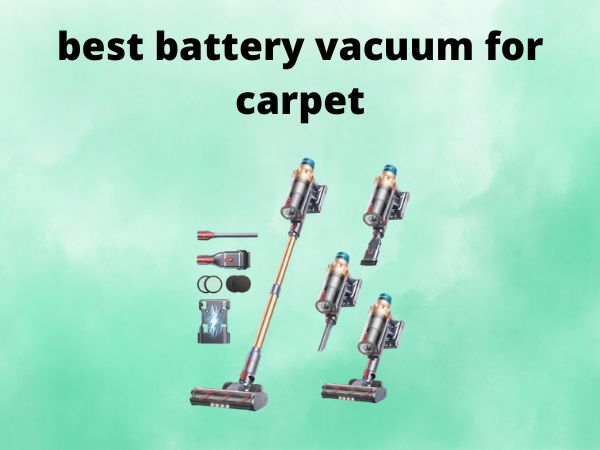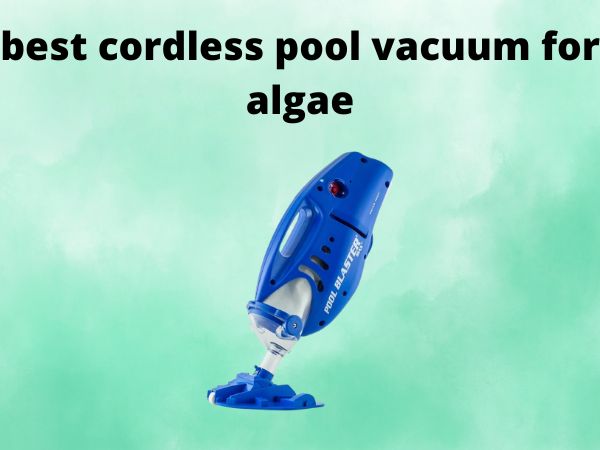5 Best Robot Vacuums for Carpets [In 2025]
Are you tired of dragging out your heavy vacuum cleaner every few days just to keep your carpets looking decent? What if I told you there’s a way to have consistently clean carpets without lifting a finger? Robot vacuums have revolutionized home cleaning, and when it comes to carpets, choosing the right one can make all the difference between spotless floors and disappointing results.
Table of Contents
Top 5 Robot Vacuums for Carpets: Detailed Reviews
1. iRobot Roomba 692 – Best Overall Value
The Roomba 692 strikes that sweet spot between functionality and affordability that makes it our top pick for most carpet owners. This isn’t the fanciest robot vacuum on the market, but it delivers consistent, reliable cleaning that’ll keep your carpets looking great without breaking the bank.
Key Features and Specifications
- 3-Stage Cleaning System: Loosens, lifts, and suctions dirt from carpets
- Dual Multi-Surface Brushes: Counter-rotating brushes work together to grab embedded debris
- Auto-Adjust Cleaning Head: Automatically adapts height for different carpet types
- 90-Minute Runtime: Sufficient for most average-sized homes
- Wi-Fi Connectivity: Control via iRobot HOME app or voice assistants
- Dirt Detect Sensors: Identifies heavily soiled areas for extra attention
Pros and Cons
Pros:
- Excellent value for money – often available for under $250
- Proven reliability from the Roomba brand
- Works well on both carpets and hard floors
- Smart enough to focus on dirtier areas
- Easy maintenance with readily available replacement parts
- Compatible with Alexa and Google Assistant
Cons:
- No advanced mapping features
- Can be noisy compared to newer models
- May struggle with very thick, plush carpets
- Random navigation pattern isn’t the most efficient
- Smaller dustbin requires frequent emptying
2. iRobot Roomba Vac Essential (Q0120) – Best Budget Option
If you’re dipping your toes into the robot vacuum world without diving deep into your wallet, the Roomba Vac Essential is your best friend. Don’t let the budget-friendly price fool you – this little cleaner packs some serious carpet-cleaning punch.
Key Features and Specifications
- 3-Stage Cleaning System: Three levels of powerful suction
- Smart Navigation: Methodical cleaning in neat rows
- 120-Minute Runtime: Longer battery life than many competitors
- Edge-Sweeping Brush: Tackles corners and edges effectively
- Low-Profile Design: Slides under furniture with ease
- Auto-Recharge: Returns to base when battery runs low
Pros and Cons
Pros:
- Incredible value – often under $200
- Longer runtime than more expensive models
- Smart row-by-row cleaning pattern
- Very quiet operation
- Excellent customer support from iRobot
- Simple setup and operation
Cons:
- Basic navigation without room mapping
- No app scheduling features
- Limited to basic cleaning modes
- May need multiple passes on heavily soiled carpets
- No virtual wall functionality
3. ILIFE V5s Plus – Best 2-in-1 Vacuum and Mop
The ILIFE V5s Plus is the multitasker of the robot vacuum world. While it’s primarily designed for hard floors, its vacuum function works surprisingly well on low-pile carpets, and the bonus mopping feature makes it a versatile cleaning companion.
Key Features and Specifications
- 2-in-1 Functionality: Vacuum and mop capabilities
- 300ml Dustbin and Water Tank: Decent capacity for both functions
- 110-Minute Runtime: Extended cleaning sessions
- 5 Cleaning Modes: Auto, spot, edge, max, and scheduled cleaning
- Smart Water Control: Three-level water output adjustment
- Ultra-Slim Design: Only 2.99 inches tall
Pros and Cons
Pros:
- Excellent value with dual functionality
- Very quiet operation – won’t scare pets
- Long battery life with auto-recharge
- Easy maintenance with fewer complex parts
- Great customer support and spare parts availability
- Perfect for low-pile carpets and area rugs
Cons:
- Not designed for thick, plush carpets
- No rubber brushes – uses suction only
- Limited advanced features compared to premium models
- Water tank requires frequent refilling for mopping
- Basic navigation without smart mapping
4. Lefant M320 – Best for Pet Hair on Carpets
Pet owners, this one’s for you. The Lefant M320 combines impressive suction power with a brushless design that laughs in the face of tangled pet hair. If your carpets are constantly battling fur tumbleweeds, this robot vacuum is your secret weapon.
Key Features and Specifications
- 6,000 Pa Suction Power: Serious power for embedded pet hair
- Brushless Design: No tangles, no maintenance headaches
- 210-Minute Runtime: Marathon cleaning sessions
- 800ml Visible Dustbin: Large capacity, easy monitoring
- Smart Carpet Detection: Automatically adjusts for carpet cleaning
- Multiple Cleaning Modes: Six different cleaning patterns
Pros and Cons
Pros:
- Incredible suction power for the price point
- Zero brush maintenance – perfect for pet owners
- Very long battery life
- Large, see-through dustbin
- Innovative mop holder design
- Excellent obstacle avoidance
Cons:
- Can be loud on maximum power setting
- Limited brand recognition and support network
- Basic mapping capabilities
- May struggle with very fine debris without brushes
- Requires 2.4GHz Wi-Fi only
5. Shark IQ Robot Vacuum – Best Self-Emptying Option
The Shark IQ Robot takes convenience to the next level with its self-emptying base that holds up to 60 days of dirt and debris. If you want truly hands-off carpet cleaning, this is your match made in heaven.
Key Features and Specifications
- Self-Emptying Base: 60-day capacity, bagless design
- 360° LiDAR Navigation: Precise mapping and obstacle avoidance
- Matrix Clean Technology: Multiple passes for deep cleaning
- Multi-Surface Brush Roll: Effective on carpets and hard floors
- Powerful Suction: Tackles embedded dirt and pet hair
- Smart Home Integration: Works with Alexa and Google Assistant
Pros and Cons
Pros:
- True set-and-forget convenience with self-emptying
- Advanced mapping and navigation
- Matrix cleaning ensures thorough coverage
- No bags required – saves ongoing costs
- Excellent app functionality with room-specific cleaning
- Strong performance on both carpets and hard floors
Cons:
- Higher upfront cost than other options
- Larger base station requires more space
- Can be noisy during self-emptying cycle
- May require multiple charging cycles for large homes
- Limited to standard suction levels compared to some competitors
Why Robot Vacuums Are Game-Changers for Carpet Cleaning
Let’s face it – carpet cleaning is nobody’s favorite chore. Traditional vacuuming requires time, energy, and let’s be honest, it’s pretty boring. But here’s where robot vacuums shine: they work while you’re doing literally anything else. Whether you’re at work, sleeping, or binge-watching your favorite show, these little cleaning warriors are tackling dirt, dust, and debris.
The beauty of robot vacuums lies in their consistency. While you might vacuum once or twice a week (if you’re being generous), a robot vacuum can clean daily. This regular maintenance means dirt doesn’t have time to settle deep into carpet fibers, keeping your carpets fresher for longer.
But not all robot vacuums are created equal, especially when it comes to carpets. The key is finding one that combines powerful suction with smart navigation and the right brush system to tackle your specific carpet needs.
What Makes a Robot Vacuum Great for Carpets?
Suction Power: The Heart of Carpet Cleaning
When it comes to carpets, suction power isn’t just important – it’s everything. Unlike hard floors where debris sits on the surface, carpets trap dirt, dust, and pet hair deep within their fibers. A robot vacuum needs enough oomph to pull all that gunk out.
Most quality robot vacuums offer multiple suction levels, allowing you to dial up the power for deep carpet cleaning or tone it down for quieter operation on hard surfaces. Look for models with at least 1,000 Pa of suction, though the best performers often exceed 6,000 Pa.
Brush Systems: Getting Deep Into Carpet Fibers
The brush system is where the magic happens. The best carpet-cleaning robots use a combination of side brushes to gather debris and main brushes to agitate carpet fibers. Some use rubber brushes that resist tangling (great for pet owners), while others employ bristle brushes that excel at digging into carpet pile.
The dual multi-surface brush system has become the gold standard, using counter-rotating brushes to lift embedded dirt while minimizing hair tangles. It’s like having a tiny carpet cleaning crew working in perfect harmony.
Navigation Technology: Smart Cleaning Patterns
Random bumping around your living room might seem cute, but it’s not efficient. Modern robot vacuums use sophisticated navigation systems – from basic sensors to advanced LiDAR mapping – to clean methodically and thoroughly.
Smart navigation means your robot won’t miss spots or waste time cleaning the same area repeatedly. It also enables features like room-specific cleaning and virtual boundaries, so you can tell your robot to focus on that high-traffic hallway carpet while avoiding your delicate area rug.
Comparison Chart: At a Glance
| Model | Price Range | Suction Power | Runtime | Best For |
| Roomba 692 | $200-$300 | 1,000+ Pa | 90 min | Overall value |
| Roomba Vac Essential | $150-$220 | 3-level system | 120 min | Budget buyers |
| ILIFE V5s Plus | $150-$200 | Medium | 110 min | Multi-function |
| Lefant M320 | $200-$280 | 6,000 Pa | 210 min | Pet owners |
| Shark IQ Robot | $400-$600 | High | Variable | Convenience seekers |
How to Choose the Right Robot Vacuum for Your Carpets
Consider Your Carpet Type
Not all carpets are created equal, and neither are robot vacuums. Low-pile carpets and area rugs are generally easier for robots to clean, while thick, plush carpets require more powerful suction and specialized brush systems.
If you have mostly low-pile carpet or a mix of carpet and hard floors, almost any quality robot vacuum will do the job. But if you’re dealing with deep-pile carpeting, focus on models with powerful suction (3,000+ Pa) and adjustable cleaning heads.
Evaluate Your Home Layout
Your home’s layout plays a huge role in robot vacuum performance. Open floor plans with minimal obstacles are perfect for basic navigation systems, while complex layouts with multiple rooms benefit from advanced mapping technology.
Consider factors like stairs (you’ll need cliff detection), furniture legs (good obstacle avoidance is crucial), and room transitions. If you have a multi-level home, you might even want to consider getting multiple units rather than carrying one robot upstairs and downstairs.
Think About Maintenance Requirements
Let’s be real – even robot vacuums need some TLC. Some models require daily dustbin emptying, while others with self-emptying bases can go weeks without attention. Brush systems need regular cleaning, filters need replacing, and batteries eventually wear out.
Consider how much maintenance you’re willing to do. If you want maximum convenience, invest in a self-emptying model. If you don’t mind a bit of regular upkeep, you can save money with a traditional model.
Tips for Maximizing Your Robot Vacuum’s Performance on Carpets
Want to get the most out of your robot vacuum investment? Here are some pro tips that’ll have your carpets looking their best:
Prep your space: Remove small objects, loose cables, and lightweight rugs that might confuse your robot. A few minutes of prep saves hours of troubleshooting later.
Run it regularly: Daily or every-other-day cleaning prevents dirt from settling deep into carpet fibers. It’s easier to maintain clean carpets than to deep-clean dirty ones.
Use virtual boundaries wisely: If your robot supports them, set up virtual walls to keep it focused on high-traffic carpet areas during specific cleaning sessions.
Maintain your robot: Clean brushes weekly, empty the dustbin after each use, and replace filters as recommended. A well-maintained robot vacuum performs dramatically better.
Consider carpet-specific settings: Many robots offer carpet boost modes that increase suction automatically when they detect carpet. Make sure this feature is enabled.
Common Mistakes to Avoid
Even the best robot vacuum can disappoint if you’re making these common mistakes:
Expecting perfection immediately: Robot vacuums learn your home over time. Give them a few cleaning cycles to optimize their performance.
Ignoring maintenance: A clogged filter or tangled brush can cut cleaning performance in half. Stay on top of basic maintenance.
Wrong height expectations: If your carpet is too thick for your robot vacuum to climb onto, it can’t clean it. Check height specifications before buying.
Forgetting about the base station: Place the charging base against a wall with plenty of clearance on both sides. A poorly positioned base leads to docking failures.
Setting unrealistic expectations: Robot vacuums are fantastic for maintenance cleaning, but they’re not miracle workers. You’ll still need occasional deep cleaning for heavily soiled carpets.
Frequently Asked Questions
Q1: How often should I run my robot vacuum on carpets? A: For best results, run your robot vacuum daily or every other day on carpeted areas. This frequent cleaning prevents dirt from embedding deep into carpet fibers and maintains consistent cleanliness. High-traffic areas may benefit from daily cleaning, while less-used rooms can be cleaned 2-3 times per week.
Q2: Can robot vacuums replace traditional vacuuming completely? A: While robot vacuums excel at maintenance cleaning, they typically can’t completely replace traditional vacuuming. You’ll still need to deep clean with a traditional vacuum monthly or bi-weekly, especially for thick carpets, stairs, and detailed edge cleaning. However, robot vacuums dramatically reduce the frequency of manual vacuuming needed.
Q3: What’s the minimum suction power needed for effective carpet cleaning? A: For low-pile carpets, 1,000-2,000 Pa of suction is generally sufficient. Medium-pile carpets perform better with 2,000-4,000 Pa, while thick, plush carpets may require 4,000+ Pa for effective cleaning. However, suction power isn’t everything – brush design and cleaning patterns also play crucial roles in carpet cleaning effectiveness.
Q4: How do I prevent my robot vacuum from getting stuck on carpet transitions? A: Most quality robot vacuums can handle carpet transitions up to 15-20mm high. To minimize issues, ensure your robot’s wheels and sensors are clean, remove loose carpet edges or tape down area rugs, and consider models with larger wheels or advanced obstacle detection if you have particularly challenging transitions.
Q5: Are robot vacuums safe for delicate or expensive carpets? A: Yes, most robot vacuums are safe for delicate carpets when used properly. They typically apply less aggressive agitation than traditional vacuums. However, test in an inconspicuous area first, use lower suction settings if available, and consider using virtual boundaries to protect especially delicate rugs. Always check your carpet manufacturer’s care instructions before using any vacuum.
Conclusion
Choosing the right robot vacuum for your carpets doesn’t have to be overwhelming. Whether you’re looking for budget-friendly reliability with the iRobot Roomba Vac Essential, maximum convenience with the Shark IQ’s self-emptying base, or pet-hair-busting power from the Lefant M320, there’s a perfect match for your needs and budget.
The key is understanding what matters most to you: Is it hands-off convenience? Maximum cleaning power? Budget-friendly operation? Once you know your priorities, the choice becomes much clearer.
Remember, the best robot vacuum is the one you’ll actually use consistently. These smart cleaning companions work best when they become part of your daily routine, quietly maintaining your carpets while you focus on the things that matter most to you.
Your carpets deserve better than sporadic weekend cleanings. Give them the daily attention they need with one of these top-rated robot vacuums, and discover what it feels like to always come home to fresh, clean floors.

